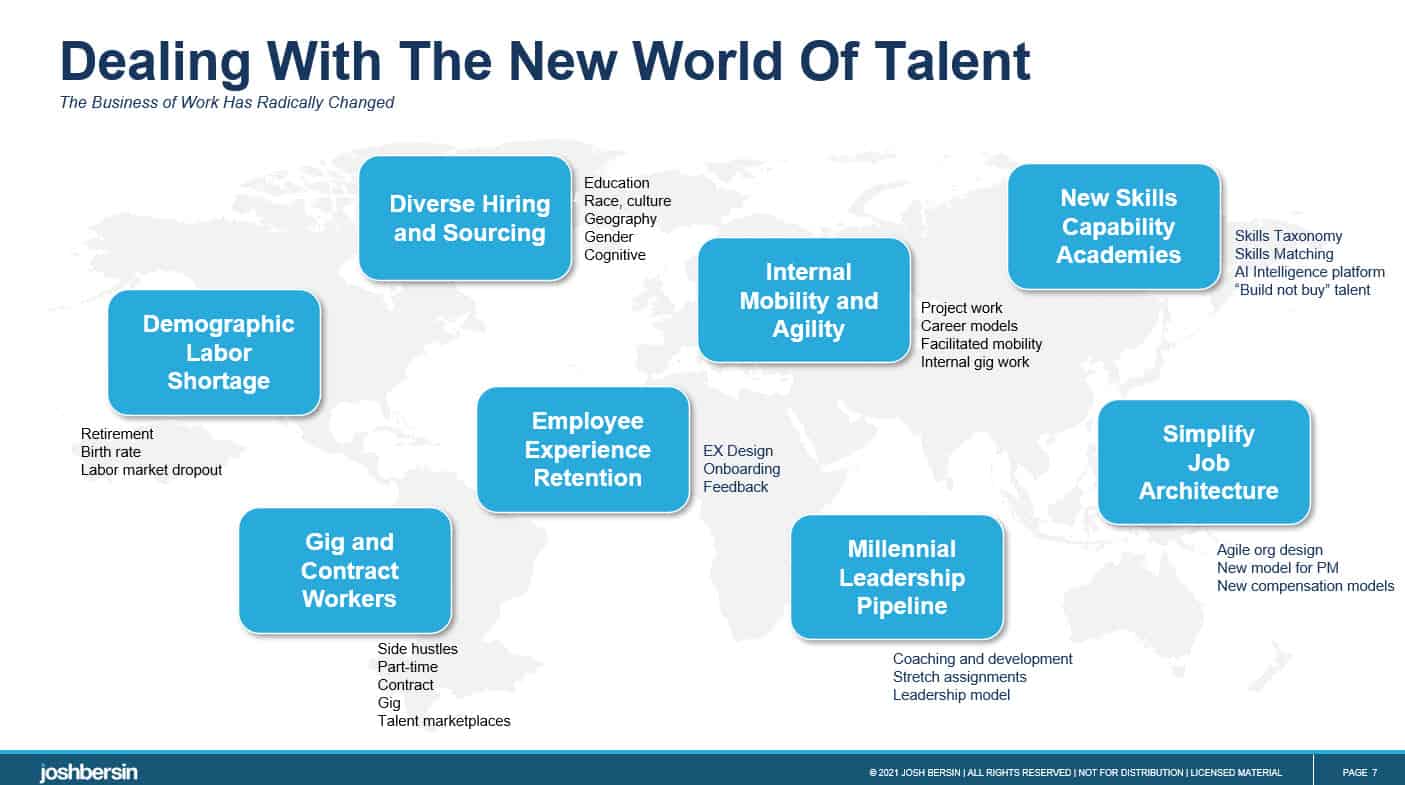Understanding The Exciting, New, Disrupted Labor Market
The Labor Market is changing fast. New jobs are being created at a record rate, remote work has now become standard fare, and the demand for service jobs is explosive. According to EMSI, there are 24% more jobs in the US than there were a year ago.
What are all these jobs? They’re in healthcare, distribution, software development, design, and even retail and entertainment. In the words of The Economist, the job market is churning. A lot of routine jobs went away during the pandemic, leaving us with more service jobs than ever.
“A paper by Joel Blit of the University of Waterloo, in Ontario, argues that “all of the routine job losses in Canada have occurred over the past three recessions”, with America seeing similar trends. Pandemics speed automation, partly for the reason identified by Coffee shops: to stop people getting sick. Economists call this forced automation. Previous pandemics, from h1n1 in 2009 to Ebola in 2014, hastened the adoption of robots.”
 |
My conversations with HR executives reinforce this trend. Delta Airlines now has 3,000 jobs open; Google plans to hire 100,000 people over the next five years; Ashley Furniture is hiring like crazy; Bayer has hired headhunters to seek out scientists. And most HR teams tell me it’s harder to hire than they’ve seen in years: recruiters often have 50-60 open positions and lots of jobs are getting no applicants at all.
What’s happening, of course, is that the recovery is booming and companies are hiring to meet consumer demand. The problem is that a lowered fertility rate, greater retirements from Baby Boomers, and the trend toward contingent work are shrinking the number of people available to work. Yes, labor participation rates will go up, but we’ve lost more than 10 million workers during the Pandemic, and groups like Boomers and Women have left the workforce in droves.
 What are we going to do about it? As I describe in my podcast, we have to rethink the idea of “building a talent supply chain.” We’ve entered the world of a “Pixelated Workforce,” one where people of all ages, backgrounds, and education are working in jobs they never dreamed about.
What are we going to do about it? As I describe in my podcast, we have to rethink the idea of “building a talent supply chain.” We’ve entered the world of a “Pixelated Workforce,” one where people of all ages, backgrounds, and education are working in jobs they never dreamed about.
A new study by IBM found that 25% of Americans changed occupations last year and 27% expect to change jobs this year. And my research shows that almost 40% of Americans changed jobs, roles, or managers. This level of change is unprecedented – and it means workers are mobile, opportunistic, and soon to be in charge. (Biden’s push toward labor unions will accelerate this.) And remote work makes workers even more mobile: your employees can change jobs without even changing their commute.
The bottom line is that a lot of things must change. We need to diversify our sourcing and recruiting, and seriously open up job search for diverse and different candidates. The days of looking for people with “deep levels of experience” are over – now we have to look for people with skills, ambition, and the ability to learn.
Internal recruiting and mobility are suddenly huge. There are dozens of vendors selling “talent marketplace” platforms but the real work is cultural. Companies have to open up their career models, create gig workplaces inside the organization, and start rewarding people for skills and reputation, not just tenure and job level.
We’re going to get very serious about internal development. As I discuss in the podcast, it can be 4-6 times less expensive to “build a candidate” than to “buy a candidate.” So you’re going to have to build capability academies and really get good at onboarding and growth mindset. I discuss Bank of America’s Academy in the podcast, it’s a great lesson for every company to follow.
But perhaps biggest of all, we have to get ready to deal with gig, contingent, and part-time work. More than 2/3 of Millennials now have side-hustles, and more and more young people see an employer as simple a “stop on the way to the next opportunity,” not a destination at all. In other words, ten years from now we may think it’s quaint to remember “I used to have one employer back in the old days.” I wrote about this in my research The Pixelated Workforce, and I encourage you to give it a look. Even SAP now lets employees “share jobs,” splitting their job in two and giving others a chance to do part of the role.
It all comes together in a new model for management, one that looks like this. We have to look at our companies as “marketplaces for talent,” not “management-led factories.” And those that do will thrive, attract great people, and grow.
 |
The pandemic has been disruptive to many things, but now that we see the labor market ahead, it’s time to strap in and deal with the future.
Resources On This Topic
Excellence in Talent Acquisition Study: This survey will result in a global benchmarking report and an analysis of the results, available to survey participants this fall.


